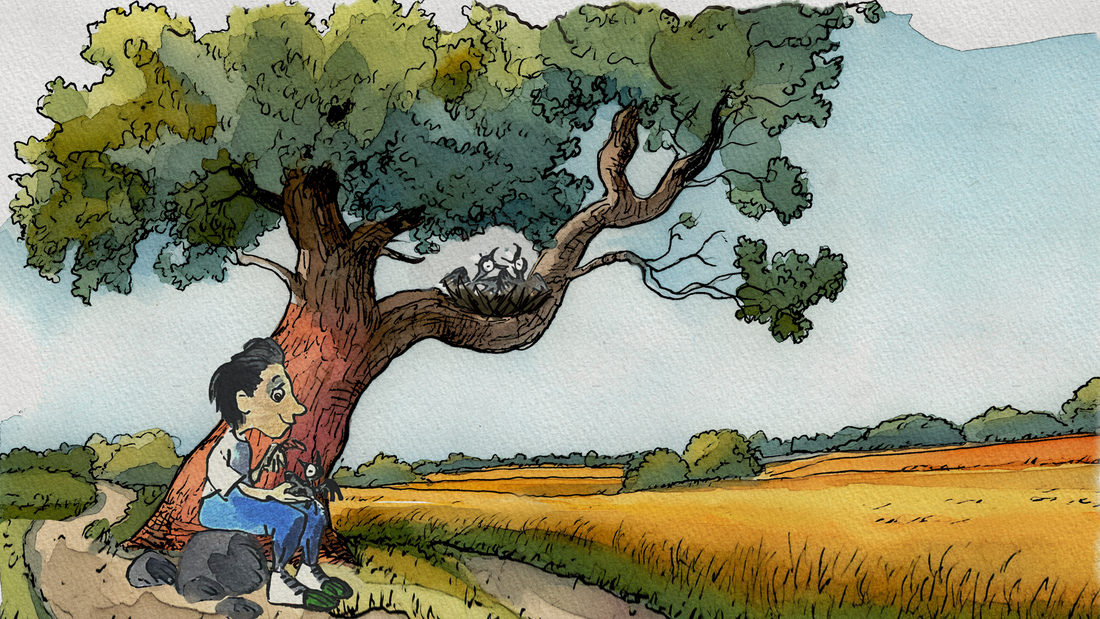
Can Your Child Tell What Happens First, Next, and Last?
Janice LawrenceHow Illustrated Stories Help Children Build Memory and Confidence
Some children struggle with reading but are brilliant at seeing. For them, richly illustrated picture books aren’t just entertaining—they’re essential. They help kids follow the flow of a story even when reading the words is hard. And the skill they build while doing that—understanding what happened first, next, and last—is the foundation of story comprehension.
Sequence is a child’s map to meaning If a child can’t follow the order of events in a story, they lose the plot—literally. But if they can? They start to understand cause and effect, relationships, and emotional change.
Visual cues anchor memory Pictures act like road signs. A fish with a ring, ants with rice, and ravens in flight aren’t just beautiful—they help children see and remember the steps of a story.
Structure builds confidence A clear beginning, middle, and end gives children a sense of control. When they can predict what comes next, they start to participate more, speak up more, and believe they’re capable.
Emotional progress makes sense As characters change, children begin to ask: Why did she feel scared at first? Why is she smiling now? These reflections nurture empathy and help children make friends.
How Pictures Tell The Story

In The Happy Boy Defeats the Giant, the boy is given three impossible tasks by a giant. He has to retrieve a golden ring from the sea; collect ten sacks of rice overnight, and find a golden apple from the Tree of Life. He completes these impossible tasks with the help of someone he was kind to earlier—a fish, a swarm of ants, and a pair of ravens. These helpers return one by one, and with each victory, the boy grows closer to rescuing his sister. The pattern is clear and satisfying: he helps → they help → he wins. Even if a child doesn’t read the text, the pictures tell them everything they need to know. That clarity invites retelling, prediction, and joy.
How Picture Books Helps All Kids Learn Beginning, Middle and End
Story sequencing helps children follow along. Each scene builds on the last. When pictures reinforce what’s happening, late readers aren’t left behind. They’re invited in.
Here's Why...



Repetition creates rhythm. The brain loves patterns. When stories follow a repeated structure—task, challenge, helper, success—it’s easier for children to anticipate and remember what comes next.
Pictures carry the weight when words don’t land. Illustrations aren’t just decoration. They hold emotional cues, narrative hints, and plot points. A child can follow along through sight long before they’re confident readers.
Cause and effect are the building blocks of logic. The boy in the story helped strangers. Then those strangers helped him. Children begin to understand that kindness matters—not because we say so, but because the story shows it.
Retelling reveals understanding. When children reenact a story with puppets, toys, or pictures, they’re showing you what they know. They’re also strengthening memory and learning to organize their thoughts aloud.
Characters grow over time. The boy starts out hopeful, becomes anxious, and ends joyful. Children who can follow this arc are learning how feelings change, and how action and emotion are connected.
Try It Out
- Read The Happy Boy Defeats the Giant aloud with your child or watch the Read-Along video together. (Scroll down the page to find Watch the Video Button.) Let your child point out what they notice in the pictures.
- Reinforce the story’s sequence of events.
Ask: “What happened first, next, and last?” Ask: “Can you remember all the jobs the boy had to do?” - Explore cause and effect.
Ask: “Why do you think the animals helped him?” Ask: “What did he do earlier that made them want to help?” - Relate the story to your child’s own world.
Ask: “What would you do if you had to complete three big tasks?” - Reflect on emotional growth.
Ask: “What do you think he felt at the beginning? How about at the end?” - Share your own stories and feelings. Talk about a time when you helped someone out and they did something nice for you in return.
TIPS
Let the pictures tell the story. Challenge your child to "tell" the story just by looking at the pictures.
Find the happy face. Use visual clues to talk about the character’s emotional growth.
Introduce sequencing language. Use words like first, next, after, and finally.
Stop 'n' Think
When children can’t organize a story, they often can’t organize their thoughts. What stories might they be struggling to make sense of in real life?

Want to help your child become a better reader?
Start with The Happy Boy Defeats the Giant — a beautifully illustrated tale that helps children feel successful, even if reading is still a struggle.
Learn More
How Picture Books Help Kids Develop Literacy Skills
The Power of Picture Books: Benefits and Why They're Important for Early Education
The Science of Reading and The Rejection of Picture Books
